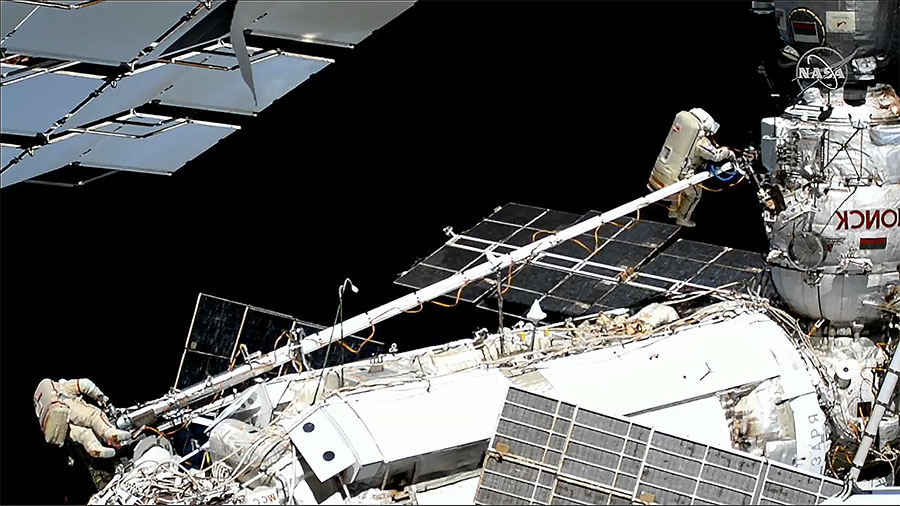
Two Russian cosmonauts completed a 7-hour, 47-minute spacewalk outside the International Space Station Friday to continue testing and readying the European Robotic Arm for regular operations, finishing tasks originally planned for a spacewalk last month that was cut short by a spacesuit battery problem.
Cosmonauts Oleg Artemyev and Denis Matveev opened the hatch of the Poisk airlock module at 9:25 a.m. EDT (1325 GMT) Friday, making the official start of the spacewalk. The cosmonauts wore Orlan spacesuits for the excursion.
Artemyev and Matveev worked ahead of schedule for much of the spacewalk. They relocated an external control panel for the European Robotic Arm, and tested the arm’s rigidizing mechanism that will be used to grasp payloads for movement outside the station. Those tasks were originally scheduled for a spacewalk Aug. 17, which ended early after abnormal battery readings on Artemyev’s Orlan spacesuit.
The battery on Artemyev’s spacesuit was replaced and re-tested, clearing the way for Friday’s spacewalk.
Before the battery issue cut short the Aug. 17 spacewalk, the cosmonauts completed the installation of two cameras on the elbow of the European Robotic Arm, and moved insulation and a launch restraint from one of the arm’s two end effectors, or hands.
The excursion outside the space station Friday was the eighth spacewalk in Artemyev’s career, and the fourth for Matveev.
Artemyev and Matveev also extended a Strela telescoping boom from the Zarya module to the Poisk module, positioning the aid for use on future spacewalks. The cosmonauts ended their spacewalk at 5:12 p.m. EDT (2112 GMT).
The 37-foot-long (11.3-meter) European Robotic Arm launched last July on Russia’s Nauka multipurpose laboratory module, and joins similar Canadian and Japanese arms outside the space station. The robotic arms are designed to move payloads and hardware to different mounting posts on the external structure of the complex.
The Canadian and Japanese robotic arms are positioned outside the U.S.-led segment of the space station, while the Russian segment is accessible to the European arm. Like the Canadian robotic arm, the European arm has the ability to “inchworm” between grapple fixtures, or base points, at multiple locations on the space station.
The excursion Friday was the 253rd spacewalk for assembly, maintenance, and upgrades of the International Space Station, and the eighth outside the ISS this year. It was the fifth spacewalk primarily dedicated to preparing the European Robotic Arm for operations.
Russian cosmonauts have additional excursions outside the space station on their schedule. They will continue work on the European Robotic Arm and prepare the airlock on the Nauka lab module to support future spacewalks.
Email the author.
Follow Stephen Clark on Twitter: @StephenClark1.
